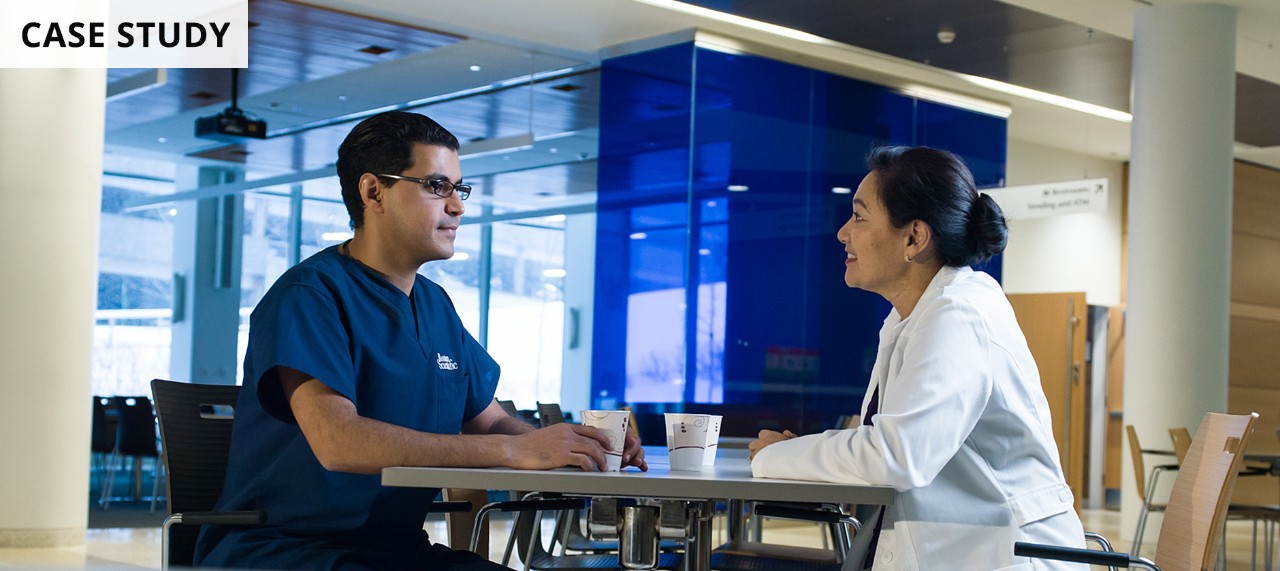Supply Chain Workflow

An endoscopy process-improvement program with replicable opportunities
Case Study: Supply chain workflow
A process-improvement pilot program at a hospital endoscopy department reveals opportunities that can be reproduced at other facilities.
While some organizations have already undertaken complex –and successful–supply-chain improvement projects, many more are just starting to assess their opportunities for reducing costs and improving patient care through workflow optimization.
The Affordable Care Act has been a driving force in providers wanting more from their suppliers. We believe that providers are looking for suppliers that are willing to work with them–to be true collaborators –to develop solutions that can help them deliver the best quality care at the lowest possible cost.
The Boston Scientific Supply Chain Optimization programs offer a range of services, from inventory optimization to overall simplification of supply management to help them do this. Here’s one example.

For the endoscopy department at one of Boston Scientific’s large Northeast U.S. hospital customers, Massachusetts Institute of Technology student Suman Machinani, MD, embarked on a thesis project to improve inventory and care workflow based on best practices of the Consumer packaged goods (CPG) industry while working as an MIT LGO Fellow for Boston Scientific’s Supply Chain team. He chose that sector because it, in many ways, resembles the typical hospital’s relationship with its consumables suppliers. His theory: Practices that have proven to optimize inventory, improve service levels and bring down costs in CPG will translate to healthcare.
Such process improvement takes both human interaction as well as automated data systems into account. “Either one, in and of itself, is necessary but not sufficient,” says Machinani, who started his career as a physician and got into management because he wanted to improve healthcare as a whole, in addition to treating patients. “When those two entities are communicating and aligning with each other, that’s where you can create more synergies and more harmony.”
Diagnosing Inventory’s Ills
The hospital endoscopy department wanted to solve several problems: Running out of some items, overstocking others and letting even more go unused. Arbitrary storage, varying levels of staff awareness of what inventory was stored where, and nonstandard ordering procedures all contributed to these problems.
A three-and-a-half month survey using a new barcode-reading system, across four different endoscopy suppliers, revealed that the hospital possessed about $145,000 worth of unused inventory and an additional $29,000 worth of expired supplies. “The data we collected were like patient vital signs – and they weren’t great,” Machinani says. “With that, we could come up with a therapeutic plan. And that is collaboration that may work – now it needs to be validated and tested.”
With Machinani’s detailed analysis and recommended collaboration between hospital staff and Boston Scientific, the endoscopy department began to reconfigure storage and standardize its processes for ordering and Boston Scientific inventory handling, as well as training employees on the new procedures.
Part of the solution involved purely internal housecleaning, such as ensuring that staff unpack supplies soon after they are received to prevent accidental reorders because clinicians were unaware they had arrived. This wasn’t just about handling physical material. It was about taking a physical action that created information in a timelier, more accurate fashion. Yet it was more than just an internal project; other process improvements involved working with Boston Scientific to optimize the supply chain. Upon the request of the hospital, Boston Scientific representatives:
- Helped educate physicians and nurses on strategies to reduce situations in which product was opened but unused
- Shared with clinical staff effective inventory-management practices observed across the industry
- Worked together with hospital staff to understand when patient volumes were greater to design standardized reordering processes to accommodate increased traffic
- Established a system with the hospital to communicate lead times for the acquisition of high-volume and high-value items, as well as alerts for changes in supplier inventory levels on critical supplies.
In the future, the hospital and its vendors will conduct periodic check-ins to review results and adjust supply flows as needed.
In your own organization, you’re likely feeling new pressure to improve operational efficiencies and implement cost saving measures. Learn more about how we can work with you for a better supply chain through our Supply Chain Optimization programs.
